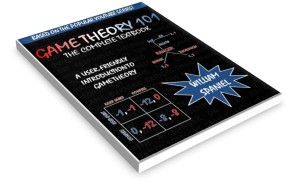So far, we have seen that grim trigger is a subgame perfect equilibrium of the repeated prisoner’s dilemma. We have also seen that tit-for-tat is a Nash equilibrium but is not subgame perfect. Are there any other equilibria of this game?
This lecture shows that the answer is yes. In fact, there are infinitely many. The reason why is called the “folk theorem” and is a general principle of infinitely repeated games. There are many different versions of the folk theorem, and we cover just one in this lecture.
Takeaway Points
- Take a Nash equilibrium from a stage game. Consider any alternative set of strategies such that the expected utility for those strategies in the stage game is strictly greater for all players. If δ is sufficiently high, a subgame perfect equilibrium exists in which players use those alternative strategies on the equilibrium path.
- The basic idea here is a simple generalization of grim trigger. Playing a Nash equilibrium forever is a subgame perfect equilibrium. We can support the alternative set of strategies along the equilibrium path through the credible threat to revert back to the Nash equilibrium of the stage game. As long as δ is close enough to 1, there will be no profitable deviation.
- We can calculate the minimum necessary value of δ by considering the utility along the equilibrium path against the utility for the most attractive deviation plus the discounted utility for the Nash equilibrium for the rest of time.
- It is called the “folk” theorem because a number of people developed the idea contemporaneously.

